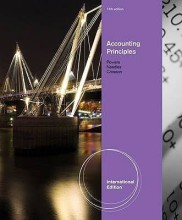Summary: Financial Markets
- This + 400k other summaries
- A unique study and practice tool
- Never study anything twice again
- Get the grades you hope for
- 100% sure, 100% understanding
Read the summary and the most important questions on Financial Markets
-
Alle weken
This is a preview. There are 67 more flashcards available for chapter 17/12/2017
Show more cards here -
Financial Intermediary (FI)
Intermediation between suppliers and demanders of financial capital. -
Two groups of FI's
1) Depository institutions 2) non-depository institutions. -
Dealer Bank (DB)
- Acts as intermediary in the market for securities, over-the-counter derivatives, etc.
- Operations are really broad: can have their own internal hedge fund, investment banking.
- Operates under the umbrella of holding companies.
- Failure of a dealer bank places stress on its counterparties and the prices of the assets and securities it holds.
- Acts as intermediary in the market for securities, over-the-counter derivatives, etc.
-
Default / credit risk (how to control it?)
A borrower might not make a contractual payment on time or not at all. Comes about due to physical and moral hazard, and asymmetric information.
Control the risk by screening and monitoring borrowers, collateral and diversification of the pool of loans. -
Interest rate risk
Risk due to mismatch of maturities of assets and liabilities. The risk creates variations in total bank value. Interest rate changes affect the value of assets/liabilities differently because of maturity/duration mismatches (higher duration à greater sensitivity to rate changes) -
Different components of liquidity risk and how to reduce it?
- Market liquidity: risk that an asset owner can’t liquefy the asset at reasonable cost when he wants to sell.
- Funding liquidity: Lender might not renew a loan (or at unfavourable terms).
- Key source is the fact that there are information asymmetries about asset quality.
- Liquidity risk can be reduced by investing in liquid assets, limiting withdrawal risk and lender of last resort.
- Market liquidity: risk that an asset owner can’t liquefy the asset at reasonable cost when he wants to sell.
-
Monetary Market Fund (MMF)
An open-end mutual fund which invests only in money markets. Money market funds are very liquid investments, and therefore are often used by financial institutions to store money that is not currently invested. -
What where the significant costs of Global Financial Crisis
Stimulus and financial sector bail outs only played a modest role. Deterioration primarily caused by the downturn itself, from which revenues decreased and expenditures increased. -
Avoiding GFC 2.0 and its side effects
- Large conventional/unconventional monetary easing, massive fiscal stimulus, and backstop and bailout of the private sector.
- Side effect from these policies: how to exit from 0 interest? How and how fast to reduce fiscal deficits and debt? How to deal with the moral hazard that bail outs induced?
-
What is a safe asset?
debt instrument that preserves its value during shocks. Information insensitive, simple assets, and strategic complementarities.
- Higher grades + faster learning
- Never study anything twice
- 100% sure, 100% understanding

































